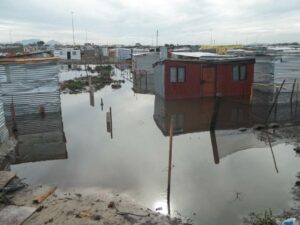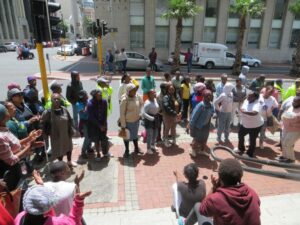
According to the South African Depression and Anxiety Group (Sadag), a child dies by suicide almost every day. The pressures of poverty, violence, bullying, and untreated mental illness weigh heavily on young minds – while access to mental healthcare remains painfully limited.
In 2023, Gauteng’s MEC for Education, Matome Chiloane confirmed that more than 40 schoolchildren in the province had died by suicide in that year alone. The numbers have been rising since. Suicide ideation is becoming part of the daily struggle for young people as ending their lives seems like the only way out of a crisis. It often starts at home and compounded by the absence of adequate support systems in schools and communities, becomes overwhelming.
Thandi Shabalala, a counsellor from Sadag, manages a community mental health centre in Tembisa that’s been trying to fill the gaping holes left by South Africa’s under-resourced public health system. “We lost a learner I was working with. He was one of four learners from Eqinisweni Secondary School in Ivory Park who died by suicide,” she shares. The four learners reportedly ingested poison, a substance known as Halephirimi, which is sold for as little as R5 to R10 in local spaza shops. Despite being banned by the Department of Agriculture, Halephirimi is still easily accessible.
Halephirimi loosely translated means “the sun will not shine” which is a real depiction of what happens when it is consumed. As Shabalala explains, it’s a tragic decision that many young people come to as an escape route from their unrelenting struggles. “We were helping him, but we had no idea that he was still dealing with various challenges at home and at school. He was facing such extreme challenges, but it wasn’t until the end that we understood how deep the pain went. Even when it doesn’t happen at school, the mental health burden doesn’t end when they leave the school gates,” she says.
The mental health needs in communities like Tembisa go beyond just individual counselling. The environment itself is rife with trauma. Poverty, violence, and substance abuse are constant barriers to stability and well-being. For the children growing up in these communities, their exposure to these harsh realities often leads to mental health struggles that are not addressed in any meaningful way.
“I work in an environment where many children walk 15 to 20 kilometres one way to get to school, with nothing but hunger and exhaustion in their bellies. They are not properly clothed, they lack access to electricity and sanitation in some schools. And they are expected to thrive? Mentally, that’s impossible,” says Ayanda Sishi-Wigzell, communications manager for Equal Education.
According to Equal Education, there is only one social worker for 30,000 children in the public schooling system. “How can we expect children to cope with the complexities of growing up in these conditions if the resources to help them aren’t available?” asks Sishi-Wigzell.
“It’s an issue rooted in systemic neglect. The austerity measures implemented by the national government mean that the funding and resources needed to provide adequate mental health support are stretched too thin. Schools, especially in underprivileged areas like Eastern Cape and KwaZulu-Natal, don’t just lack social workers. They lack access to basics – libraries, sports fields, and proper learning environments – all of which contribute to children’s mental and emotional development. It’s not just about hiring more social workers. It’s about creating an environment where children can be safe, where they can dream beyond the harshness of their everyday lives.”
Sishi-Wigzell emphasises that blame for mental health crises cannot be put at one door: “We need to look at it holistically. It’s not just a departmental issue, but a failure across the board. Municipalities aren’t fixing roads, local governments aren’t providing green spaces for children to play, and departments aren’t coordinating resources effectively.”
For those working directly with under-resourced schools such as Shabalala, these challenges are compounded by a severe shortage of trained mental health professionals. Projects like the Masiviwe Mental Health Project come in to fill this gap.
According to Jennifer Charlton, the head of Masiviwe, there is a critical shortage of trained psychologists, psychiatrists, and psychiatric nurses in the public healthcare system. She points, however, to community-based mental healthcare that can provide accessible support for young people.
“Community organisations, churches, and even older members of the community are often the first line of support for children who are struggling,” Charlton explains. “They may not be professional therapists, but they can offer a listening ear, a safe space, or even just a moment of care that can make a world of difference to a child in crisis. And with time, becoming more skilled and trained to understand these problems can be beneficial.
“After-school programs can be an incredibly important part of mental healthcare,” Charlton continues. “We tend to wait until a child is in crisis before we start thinking about mental health resources – but we need to focus more on what happens before that. If we can create safe spaces where children can talk about their issues, do homework, and just be kids, we can start to address the problem earlier.”
This kind of grassroots approach, focusing on community-led solutions, could be one of the keys to addressing the mental health crisis facing South Africa’s youth. It’s about making mental health support accessible and integrated into everyday life.
If you or someone you know is struggling, remember that Sadag is here to help. You can reach their 24/7 suicide helpline at 0800 567 567, or send a message to their WhatsApp support line at 076 882 2775.





